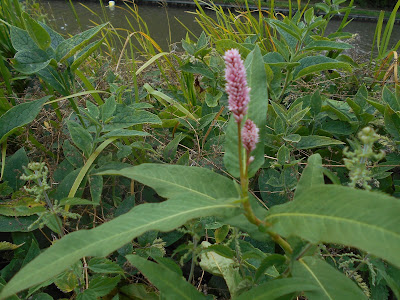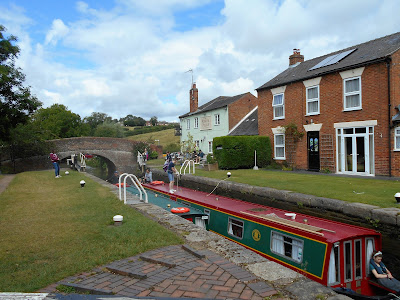 |
| Hedge Woundwort at Kentle Wood, Daventry. 30 August, 2016 |
Among the flowers were a few tatty specimens of Hedge Woundwort, Stachys sylvatica. I refer to these in a rather dismissive way, common as they are, but they are an important source of nectar and plants such as this will sustain bees and other insects until the autumn feast of ivy nectar becomes available.
Similarly important - and possibly even more tattier - were clumps of Creeping Thistle, Cirsium arvense. These too will produce a few flowers over the next few weeks, their nectar eagerly sought.
* Yes, I know its not a true triumvirate; I plead poetic licentiousness.
 |
| Creeping Thistle, Kentle Wood, Daventry. 30 August, 2016 |
This triumvirate* of pink-purple flowers was completed by Rosebay Willowherb, Chamerion angustifolium. I looked in vain for the caterpillars of the Elephant Hawkmoth, for which this plant is a pabulum. My friend Lynda found one recently in Byfield but so far this year they have evaded me.
 |
Rosebay Willowherb is still in bloom at Kentle Wood, Daventry.
30 August, 2016
|
So yes, there were still plants in flower but we are now moving into Keats' 'season of ... mellow fruitfulness'. Most striking were the rowans, with their corymbs of scarlet fruit. At the moment they are more or less untouched, but turdine birds such as Song Thrushes and Blackbirds will soon be gorging on them, putting on the fat lost during the breeding season to take them through winter.
 |
| Rowan, Sorbus aucuparia. Kentle Wood, Daventry. 30 August, 2016 |
Sloes, elderberries and, of course, blackberries are also becoming available (although the sloes will not be taken for another three months or so, by which time they will have bletted). Brambles are, of course, extremely variable so, although they may be lumped together as Rubus fruticosus, this variability means that although some 'microspecies' now bear fully ripened fruit, others are only just coming into flower. As I have mentioned in a previous blog, the study of these microspecies is known as batology - and the study of bats is chiropterology. Oh dear!
 |
Some bramble microspecies are still flowering at Kentle Wood.
30 August, 2016
|
Anyway, back to the blue or green flies I mentioned in the opening paragraph. The situation is not as simple as it might appear. There are bright glossy green flies in several families. There are the so-called 'dollies', i.e. members of the Dolichopodidae such as Dolichopus rupestris, there is a Tachinid fly, Gymnochaeta viridis, and there are species from various other families. But by far the most obvious when we are out and about are Muscid flies ( i.e. in the same family as the common house fly) such as Neomyia species, and blowflies such as Lucilia species. I don't claim the expertise to recognise these muscids and blowflies without examination via a hand lens or, frequently, a microscope. As 95% of the species examined turn out to be very common flies, this can be rather frustrating but the occasional surprise makes it worthwhile.
 |
| Greenbottle on birch leaf. Kentle Wood, Daventry. 30 August, 2016 |
This 'greenbottle' fly on a birch leaf is typical of those likely to be seen on a walk almost anywhere. It flew off as I photographed it so, despite having studied flies for many years, other than stating that it is a male (the compound eyes almost meet in the middle) I simply cannot put a name to it.
The temperature was steadily climbing so I re-crossed the stile (with a little less elan than a couple of hours earlier) to get back to my car and find that, according to the dash, it was 24 degrees. Nothing untoward had been noted but my microscope may later reveal surprises.
* Yes, I know its not a true triumvirate; I plead poetic licentiousness.















































